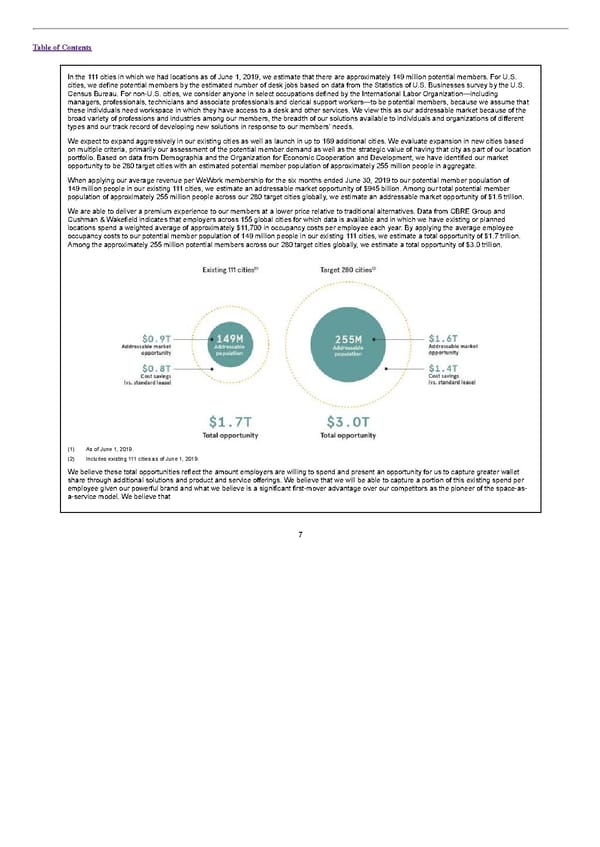Table of Contents In the 111 cities in which we had locations as of June 1, 2019, we estimate that there are approximately 149 million potential members. For U.S. cities, we define potential members by the estimated number of desk jobs based on data from the Statistics of U.S. Businesses survey by the U.S. Census Bureau. For non-U.S. cities, we consider anyone in select occupations defined by the International Labor Organization—including managers, professionals, technicians and associate professionals and clerical support workers—to be potential members, because we assume that these individuals need workspace in which they have access to a desk and other services. We view this as our addressable market because of the broad variety of professions and industries among our members, the breadth of our solutions available to individuals and organizations of different types and our track record of developing new solutions in response to our members’ needs. We expect to expand aggressively in our existing cities as well as launch in up to 169 additional cities. We evaluate expansion in new cities based on multiple criteria, primarily our assessment of the potential member demand as well as the strategic value of having that city as part of our location portfolio. Based on data from Demographia and the Organization for Economic Cooperation and Development, we have identified our market opportunity to be 280 target cities with an estimated potential member population of approximately 255 million people in aggregate. When applying our average revenue per WeWork membership for the six months ended June 30, 2019 to our potential member population of 149 million people in our existing 111 cities, we estimate an addressable market opportunity of $945 billion. Among our total potential member population of approximately 255 million people across our 280 target cities globally, we estimate an addressable market opportunity of $1.6 trillion. We are able to deliver a premium experience to our members at a lower price relative to traditional alternatives. Data from CBRE Group and Cushman & Wakefield indicates that employers across 155 global cities for which data is available and in which we have existing or planned locations spend a weighted average of approximately $11,700 in occupancy costs per employee each year. By applying the average employee occupancy costs to our potential member population of 149 million people in our existing 111 cities, we estimate a total opportunity of $1.7 trillion. Among the approximately 255 million potential members across our 280 target cities globally, we estimate a total opportunity of $3.0 trillion. (1) As of June 1, 2019. (2) Includes existing 111 cities as of June 1, 2019. We believe these total opportunities reflect the amount employers are willing to spend and present an opportunity for us to capture greater wallet share through additional solutions and product and service offerings. We believe that we will be able to capture a portion of this existing spend per employee given our powerful brand and what we believe is a significant first-mover advantage over our competitors as the pioneer of the space-as- a-service model. We believe that 7
 S1 - WeWork Prospectus Page 11 Page 13
S1 - WeWork Prospectus Page 11 Page 13